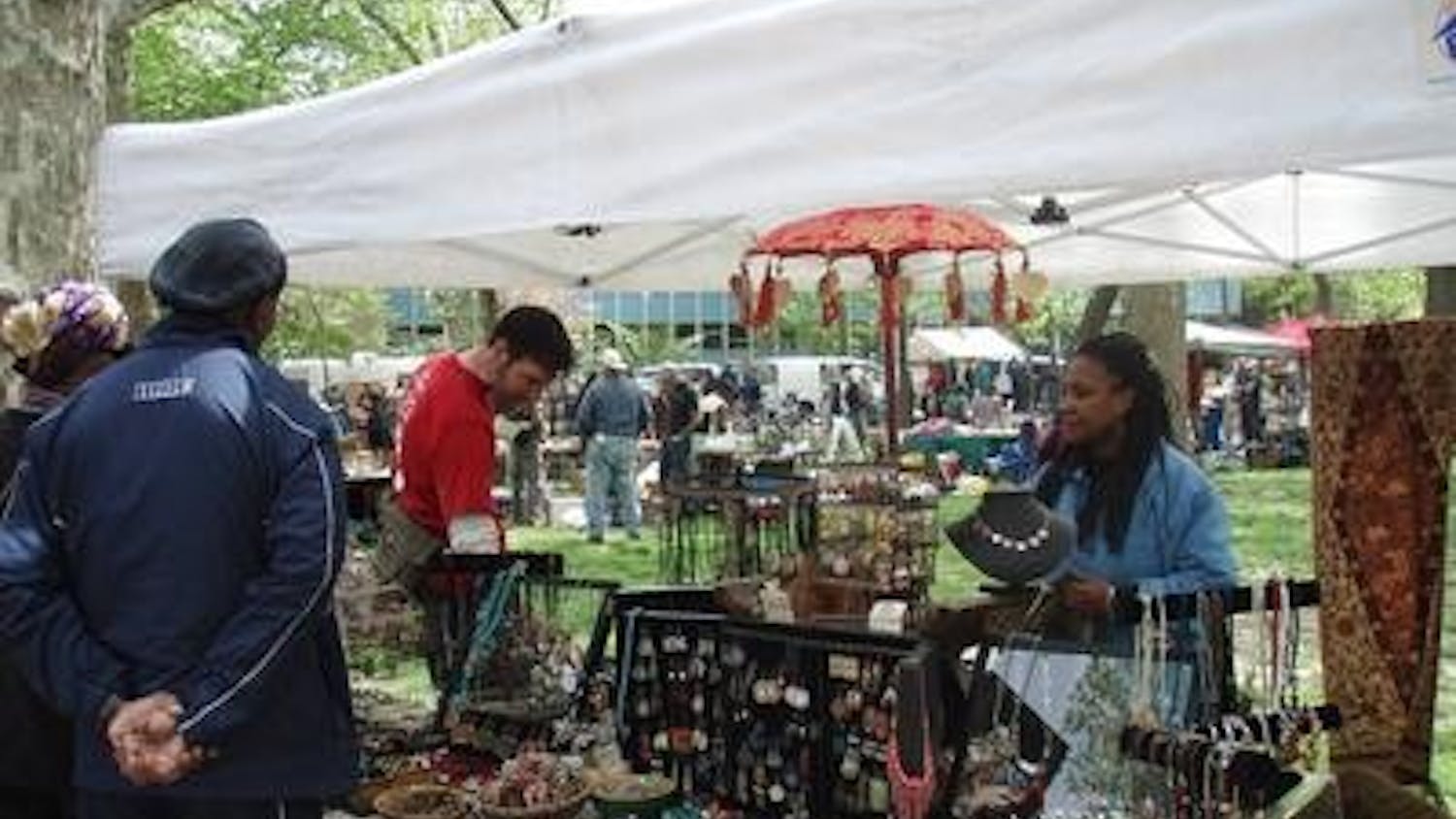"Filadelfia Latina: Nuestros Caminos, Nuestras Comunidades" at the Taller Puertorrique¤o is stimulus overload. In a narrow space about the size of a classroom, the exhibit manages to account for Latin presence in Philadelphia dating from the late eighteenth century to the present. Chronologies, photographs, newspaper clips and interviews are used, translated into both English and Spanish. The Taller becomes like a proud mother figure to the estimated 128,928 Latinos who currently live in the Philadelphia area. "We want people to take away the diversity within the community and aspects of the community that are not normally shown in the media," explains curator Joseph Gonzalez, an ethnographer.
Black and white photos from the Historical Society of Pennsylvania show migrant workers, men stepping off old airplanes with suitcases and smiling women with bee-hive hair cuts. Hanging nearby are photographs of a man code named "Arturo," an illegal immigrant working twelve hour days, six days a week in a Chinatown restaurant. "The section really humanizes the immigration experience," says Gonzalez.
The views of modern life in the Latin community in Philadelphia are the real treat of the gallery. Photographers like Tony Rocco and Gonzales depict everyday sights in vibrant colors, a mixture of candid and posed shots in businesses, homes and celebrations. Kids drape their arms around each other smiling. A pre-teen couple dances at the Puerto Rican Day parade. Neon signs in the windows of business are captured, one declaring "SEGURO NOTARIA -- MONEY ORDERS." The room is saturated with color and energy, presenting Latino life from many angles.
A portion is dedicated to the darker side of life in the community. Several photographs document grief after the drive-by shooting death of an innocent girl, the caption lamenting the event as all too common. In a particularly poignant black and white photo of an alleyway, photographer Filomena "Gringa" Almodovar explains that while shootings and stabbings have taken place there, this was also where she and her friends had of one of their most memorable water balloon fights.
"Filadelfia Latina" is a serious and poignant look at a community with a very strong sense of identity and pride. "The thing that makes this exhibit exceptional was the community dedication -- it had to represent many different voices and everyone was completely committed to it," says exhibit designer Lana Hum.
The dedication is clear. The result is memorable.






